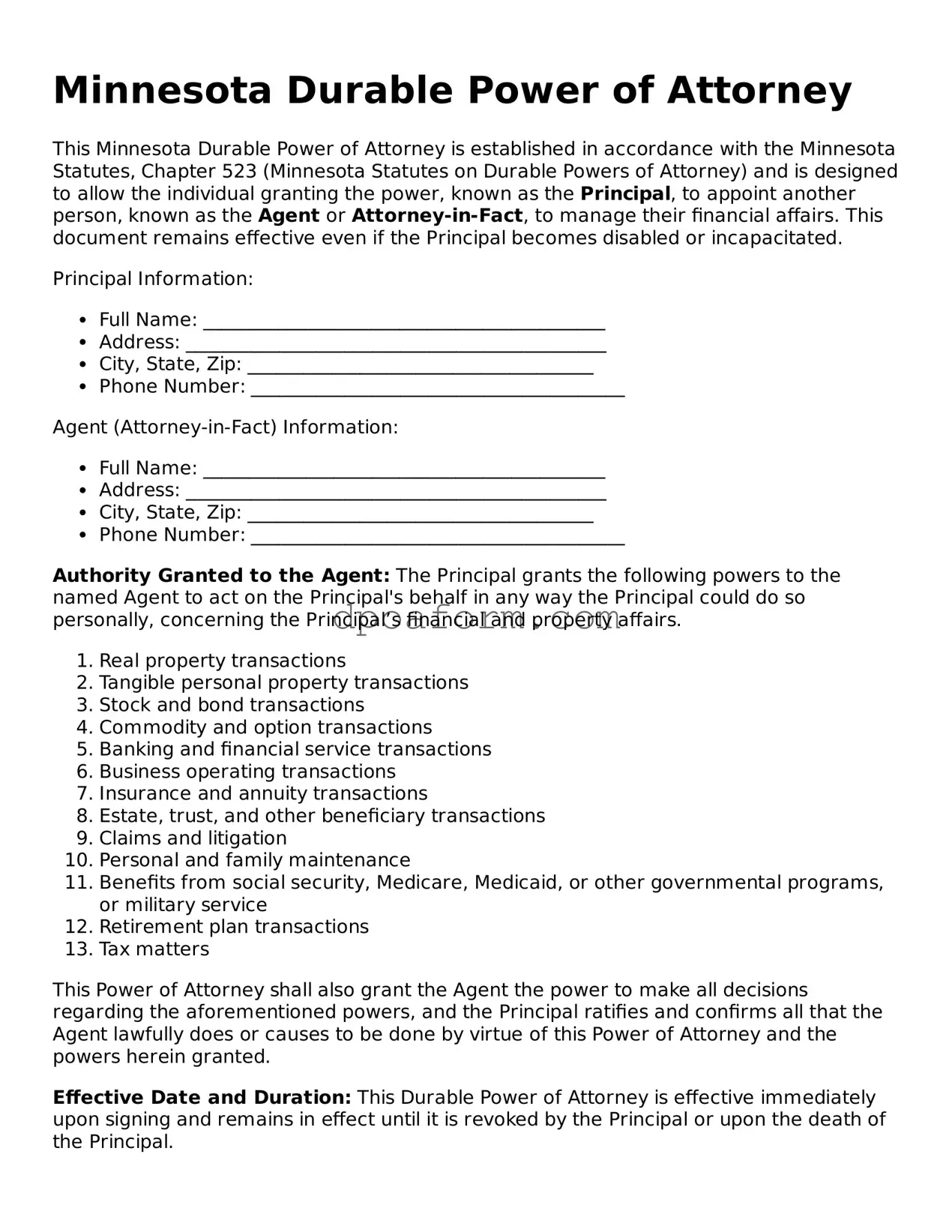Minnesota Durable Power of Attorney: Usage Steps
When planning for your future, it's paramount to consider who will manage your affairs if you become unable to do so yourself. A Minnesota Durable Power of Attorney form is a legal document that allows you to appoint someone you trust as your agent, empowering them to make decisions on your behalf. Completing this form might seem daunting, but taking it one step at a time can make the process manageable. Here’s how to accurately fill out the Minnesota Durable Power of Attorney form to ensure your wishes are honored and your future is secured.
- Gather the necessary information: Before filling out the form, collect all the required details including your full legal name, the name of the person you are appointing as your agent, address details, and the specific powers you wish to grant.
- Download the form: Access the Minnesota Durable Power of Attorney form online through the Minnesota Judicial Branch website or a reputable legal forms provider.
- Fill in personal details: Start by entering your full name and address in the designated sections at the top of the form. This identifies you as the principal.
- Designate your agent: Enter the name and contact details of the person you are appointing as your agent. This individual will act on your behalf, so choose someone you trust implicitly.
- Grant powers: Clearly specify the powers you are granting to your agent. This can range from managing your financial assets to making health care decisions, depending on the form's options. Be as detailed as possible to avoid any ambiguity.
- Special instructions: If you have any specific wishes or limitations concerning the powers granted, document them clearly in the provided section. This ensures your agent acts within your specified guidelines.
- Sign the form: Review the form thoroughly to ensure all entered information is correct and complete. Then, sign and date the form in the presence of a notary public. This step is crucial, as it legitimizes the document.
- Notarize the form: Have the form notarized. The notary public will verify your identity and witness your signature, officially certifying the document.
- Distribute copies: Give a copy of the notarized form to your appointed agent and keep the original in a secure place. It might also be wise to provide copies to relevant financial institutions, health care providers, or attorneys involved in your affairs.
Successfully filling out the Minnesota Durable Power of Attorney form is a significant step in securing your future and the management of your affairs. By following these steps diligently, you can rest assured that you have effectively communicated your wishes and appointed a trusted individual to act on your behalf. Remember, laws and requirements may change, so it's always a good idea to consult with a legal professional to ensure your document complies with current Minnesota laws and fully supports your intentions.
